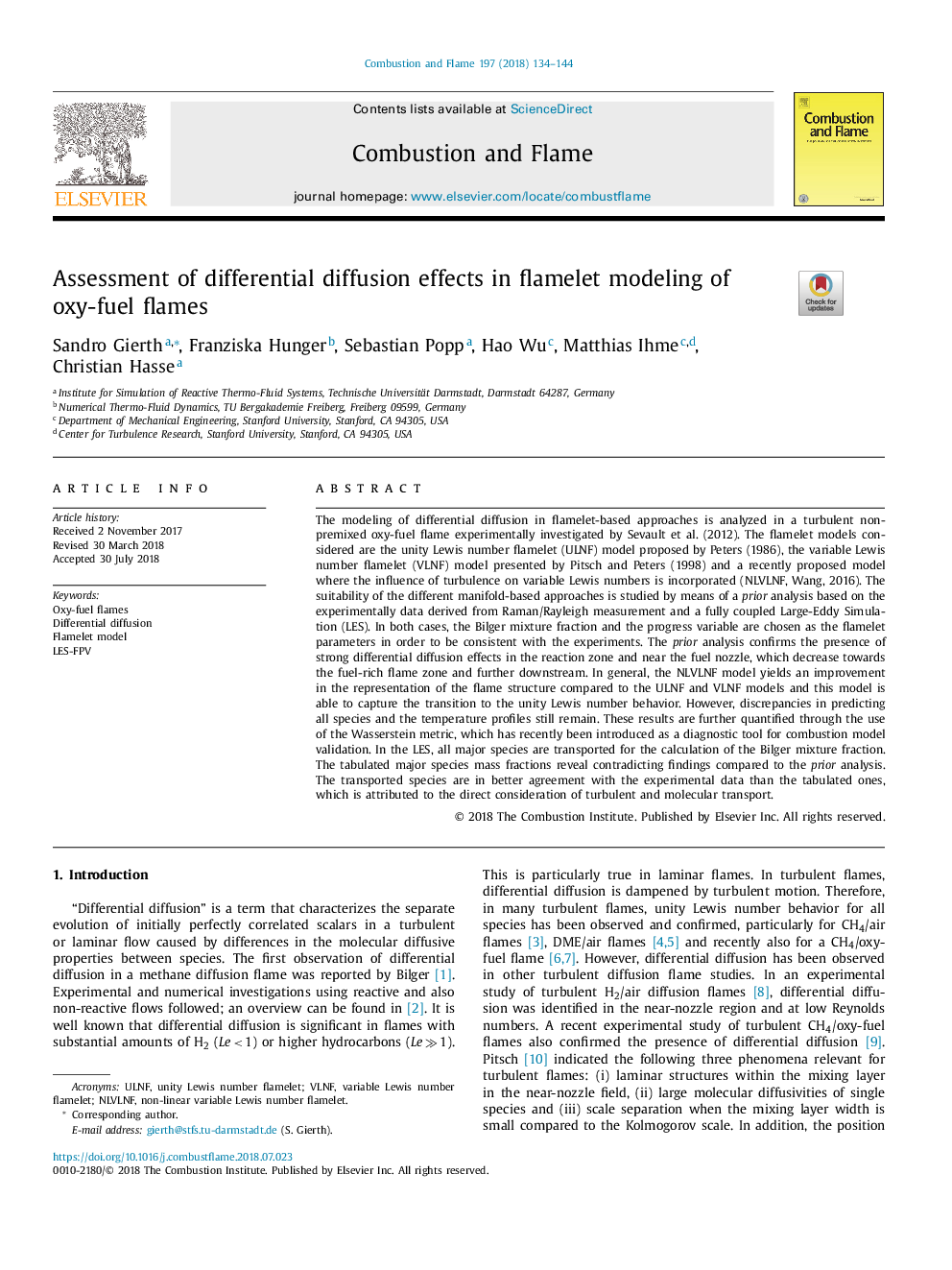| کد مقاله | کد نشریه | سال انتشار | مقاله انگلیسی | نسخه تمام متن |
|---|---|---|---|---|
| 11000291 | 1423540 | 2018 | 11 صفحه PDF | دانلود رایگان |
عنوان انگلیسی مقاله ISI
Assessment of differential diffusion effects in flamelet modeling of oxy-fuel flames
ترجمه فارسی عنوان
ارزیابی اثرات افتراقی در مدل سازی فلیم شعله های اکسیدکربن
دانلود مقاله + سفارش ترجمه
دانلود مقاله ISI انگلیسی
رایگان برای ایرانیان
موضوعات مرتبط
مهندسی و علوم پایه
مهندسی شیمی
مهندسی شیمی (عمومی)
چکیده انگلیسی
The modeling of differential diffusion in flamelet-based approaches is analyzed in a turbulent non-premixed oxy-fuel flame experimentally investigated by Sevault et al. (2012). The flamelet models considered are the unity Lewis number flamelet (ULNF) model proposed by Peters (1986), the variable Lewis number flamelet (VLNF) model presented by Pitsch and Peters (1998) and a recently proposed model where the influence of turbulence on variable Lewis numbers is incorporated (NLVLNF, Wang, 2016). The suitability of the different manifold-based approaches is studied by means of a prior analysis based on the experimentally data derived from Raman/Rayleigh measurement and a fully coupled Large-Eddy Simulation (LES). In both cases, the Bilger mixture fraction and the progress variable are chosen as the flamelet parameters in order to be consistent with the experiments. The prior analysis confirms the presence of strong differential diffusion effects in the reaction zone and near the fuel nozzle, which decrease towards the fuel-rich flame zone and further downstream. In general, the NLVLNF model yields an improvement in the representation of the flame structure compared to the ULNF and VLNF models and this model is able to capture the transition to the unity Lewis number behavior. However, discrepancies in predicting all species and the temperature profiles still remain. These results are further quantified through the use of the Wasserstein metric, which has recently been introduced as a diagnostic tool for combustion model validation. In the LES, all major species are transported for the calculation of the Bilger mixture fraction. The tabulated major species mass fractions reveal contradicting findings compared to the prior analysis. The transported species are in better agreement with the experimental data than the tabulated ones, which is attributed to the direct consideration of turbulent and molecular transport.
ناشر
Database: Elsevier - ScienceDirect (ساینس دایرکت)
Journal: Combustion and Flame - Volume 197, November 2018, Pages 134-144
Journal: Combustion and Flame - Volume 197, November 2018, Pages 134-144
نویسندگان
Sandro Gierth, Franziska Hunger, Sebastian Popp, Hao Wu, Matthias Ihme, Christian Hasse,
